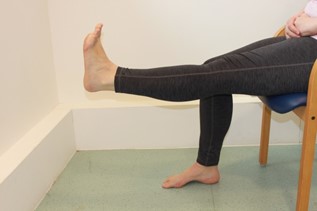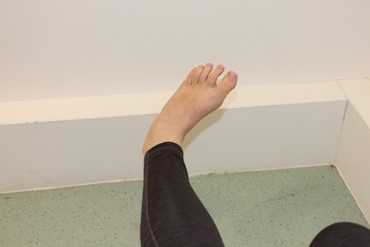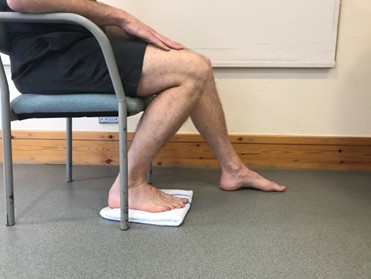Self help resources - Ankle and Foot

Documents / Leaflets
Useful Sites
-
The following information has been written to help you fully self-manage your foot or ankle pain.
However, please self-refer straight away to be assessed by a Physiotherapist if you:
- Have had recent trauma to your foot/ankle and have a significant loss of movement/strength or noticeable swelling
- Constant day & night pain that you cannot settle
- You are off-sick and struggling to return to work due to your pain
- Your symptoms are worsening and are not improving despite following advice below over the course of six weeks
If you have a history of cancer, immunodeficiency or TB and have new, unexplained and constant pain then please speak to your GP whilst you attempt the following self-help advice.
What can I do to help?
Foot and ankle pain is common with or without trauma but can be self-managed really effectively following some simple advice and exercises. If you are struggling with your pain, the following initial advice should help you to get started:
Pain relief: Basic painkillers (like paracetamol) or non-steroidal anti-inflammatory gels (such as Ibuleve/Voltarol) are easily available over the counter without the need for prescription. These can be very effective as they lessen your discomfort and importantly allow you to keep moving/active. However, please check the labels for instructions/safe usage and any possible reasons why you should not use them. If you are currently taking any form of medication it is advisable to consult your GP or Pharmacist before taking additional pain relief.
Ice: If you have persistent pain/ache then applying an ice pack may be helpful for reducing pain/irritation. A packet of frozen peas wrapped in a tea-towel works well. Leave in place for up to 15 minutes at a time. This can be repeated several times a day if found helpful.
Elevation: If you have had a recent injury then where possible, keep your foot elevated above the height of your hips for the first few days. We no longer advise the use of compression bandages as there does not appear to be a direct benefit from using them, however, if you find them comforting you may decide to use one.
Rest vs. activity: It is usually best to carry out your normal activities, but try not to overdo it. Let pain be your guide; short-lasting/temporary discomfort is fine but worsening or constant 24/7 pain indicates you are likely doing too much and need to take things a little easier. You need to pace yourself to start with and try to do a bit more each few days. You will find keeping your ankle gently moving more comfortable than complete rest. If you have had a recent injury then you may need to reduce the amount of walking that you do for the first few days.
Exercise
Exercise
Exercise can be an extremely beneficial treatment for your foot/ankle pain as it can gradually build the tolerance and load-capacity of your tissues and help ease stiffness and soreness. If you have had a recent injury then start gently and progress as your pain allows.
Please try this exercise programme 2-3 times a day. A small increase in pain is OK if it goes away within 30 minutes and not worse the next day. If you feel you have done too much, don’t worry, do fewer repetitions or smaller movements the next time and then gradually build up again. It may take 5-6 weeks before you start to see any obvious improvement.
For a printable version of these exercises please click here
If your foot/ankle pain does not improve over the next 5-6 weeks, or gets worse despite the exercises, then you can self-refer yourself to see a Physiotherapist for an assessment.
Exercise 1 - Ankle Paddles
Exercise 1- Ankle Paddles
Pull your foot towards you as far as you can. Hold for a few seconds and then push away from you and hold for as long as you can. You may need to use a towel if you struggle to reach your foot.
Repeat 10 times


Exercise 2 - Ankle Twist
Turn the sole of your foot inwards and hold for a few seconds and then turn outwards and hold for a few seconds. You may need to use a towel if you struggle to reach your foot.
Repeat 10 times


Exercise 3 - Ankle Slides
Sitting in a chair with the foot flat on the floor. Slide your injured foot backwards along the floor keeping your foot in contact with the floor.
Repeat 10 times


Exercise 4 - Toe Crunching
Whilst sitting place a tea towel under your toes and practice scrunching the tea towel up with them.
Repeat 10 times


Exercise 5 - Seated Heel Raises
Whilst sitting lift up onto your toes and back down again
If this is easy you can add resistance by leaning your weight through your elbows onto your knees
Repeat 10 times

